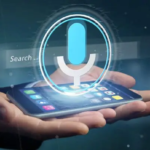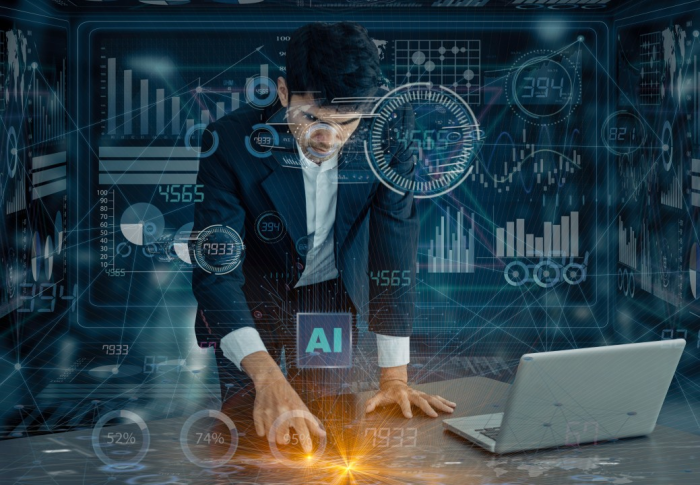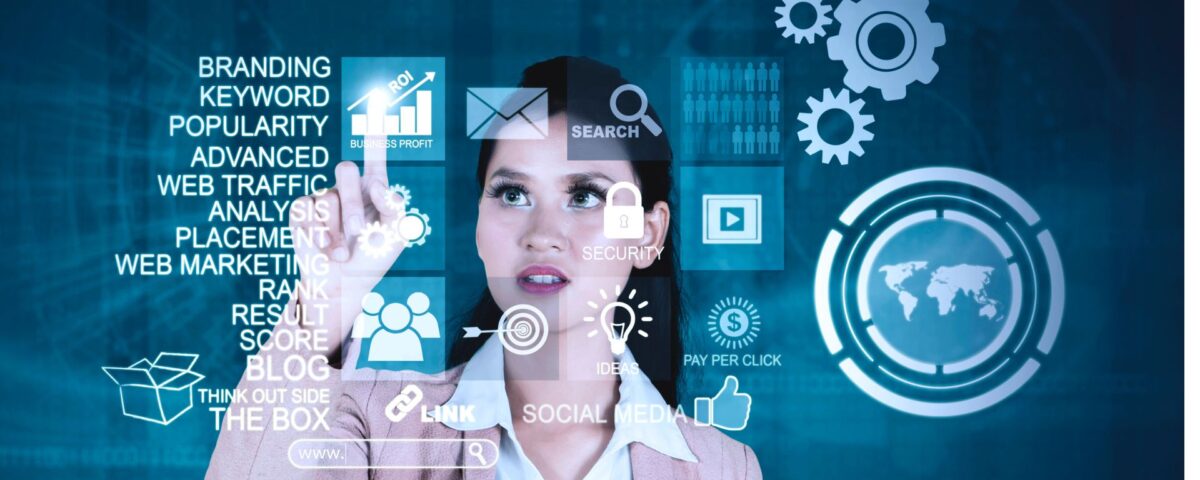
AI Meets UX: Designing Engaging User Experiences with Data-Driven Insights
October 25, 2024
The Human Touch Meets AI: Striking the Perfect Balance in Marketing
October 29, 2024Table of Contents
- Introduction: The Power of AI in Modern Marketing
- What is AI Marketing Automation?
- How to Build AI-Powered Smart Campaigns
- Essential Tools for AI Marketing Automation
- Optimizing the Sales Funnel with AI
- Measuring Success: Metrics and Optimization Techniques
- Real-World Success Stories
- Challenges and Ethical Considerations
- Future Trends Shaping AI Marketing Automation
- Conclusion: Embrace AI, Accelerate Growth

Chapter 1: Introduction – The Power of AI in Modern Marketing
The digital era has transformed consumer behavior, and with that, marketing strategies have evolved too. Today, customers expect personalized interactions, real-time support, and seamless experiences across various channels. Traditional marketing methods that rely on generalized messages and manual processes can no longer keep up with these demands. AI marketing automation offers a solution by enhancing efficiency, personalization, and predictive power. Here’s how AI is reshaping modern marketing:
- Personalization at Scale: AI-driven tools analyze customer behavior to create hyper-personalized messages for thousands of individuals simultaneously.
- Real-Time Campaign Adjustments: Campaigns powered by AI adjust automatically based on customer interactions, ensuring relevance throughout the buyer’s journey.
- Automation of Repetitive Tasks: Routine tasks such as email scheduling, data entry, and lead scoring are automated, freeing up time for marketers to focus on strategy.
- Improved Targeting with Predictive Analytics: AI can predict which leads are more likely to convert, enabling businesses to allocate resources more efficiently.
- Multi-Channel Synchronization: AI integrates campaigns across platforms—such as social media, emails, and chatbots—to create cohesive brand experiences.
The shift towards AI marketing automation enables companies to remain competitive while increasing customer satisfaction and boosting sales outcomes. Businesses that embrace this technology early can achieve higher returns on investment (ROI) and create campaigns that resonate with their audiences.
Chapter 2: What is AI Marketing Automation?
AI marketing automation involves the use of artificial intelligence technologies, such as machine learning, predictive analytics, and natural language processing (NLP), to streamline and optimize marketing processes. Unlike traditional automation, which relies on pre-defined workflows, AI systems learn from data patterns and customer behavior to make real-time decisions.
Key Components of AI Marketing Automation
- Machine Learning (ML): Algorithms learn from historical data to make predictions about future customer behavior, such as purchasing likelihood or churn risks.
- Natural Language Processing (NLP): Enables chatbots and virtual assistants to understand, process, and respond to customer queries in human-like ways.
- Predictive Analytics: Analyzes historical data to forecast trends, helping businesses anticipate customer needs and deliver proactive solutions.
- AI-Driven Segmentation: Divides customers into dynamic segments based on behavior, demographics, and preferences for better targeting.
- Dynamic Content Delivery: AI personalizes content delivery by automatically recommending products, articles, or offers to users based on their preferences.
Benefits of AI Marketing Automation
- Increased Efficiency: Reduces the need for manual work by automating repetitive tasks such as email campaigns and data updates.
- Enhanced Customer Experience: Creates personalized experiences that adapt to individual needs and behaviors in real time.
- Better Conversion Rates: By delivering relevant messages at the right time, AI increases the likelihood of conversion.
- Scalable Campaigns: Businesses can execute large-scale campaigns without compromising the quality of personalization.
Chapter 3: How to Build AI-Powered Smart Campaigns
Creating effective AI-powered campaigns requires a strategic approach to ensure alignment with business goals. Here is a step-by-step guide to building successful AI campaigns:
- Define Clear Objectives
- Identify what you want to achieve, such as lead generation, brand awareness, or customer retention.
- Set measurable KPIs (e.g., conversion rate, click-through rate, or customer lifetime value).
- Collect and Organize Data
- Use customer data from CRM systems, social media platforms, and website analytics.
- Ensure data is clean, structured, and compliant with privacy regulations (e.g., GDPR).
- Segment Your Audience with AI
- Use AI to create dynamic segments based on customer behavior and preferences.
- Predict which customers are more likely to respond to specific campaigns or offers.
- Create Personalized Content
- Implement AI-powered content generation tools to tailor messages for different audience segments.
- Use predictive product recommendations for eCommerce websites or personalized subject lines for email campaigns.
- Set Up Automation Triggers
- Design workflows that automatically trigger actions based on customer behavior (e.g., abandoned cart emails).
- Ensure campaigns are timely and relevant by using AI to predict the best moments for outreach.
- Monitor and Optimize in Real Time
- Use AI dashboards and analytics to track performance and make adjustments.
- Apply AI-powered A/B testing to identify the most effective elements of your campaign.

Chapter 4: Essential Tools for AI Marketing Automation
Several platforms and tools offer powerful AI marketing automation capabilities. These tools streamline operations, enhance personalization, and optimize outcomes. Below is a list of essential tools:
- HubSpot
- An all-in-one marketing platform that uses AI to score leads, automate emails, and manage customer relationships.
- Marketo Engage
- Provides AI-powered email marketing, lead nurturing, and predictive analytics to enhance engagement.
- Drift
- Uses AI chatbots to automate conversations and qualify leads in real time, improving sales conversion.
- Hootsuite
- AI-powered social media management tool that schedules posts and tracks performance across platforms.
- Mailchimp
- Automates email campaigns with AI-driven segmentation and personalized content recommendations.
Chapter 5: Optimizing the Sales Funnel with AI
AI marketing automation enhances every stage of the sales funnel, from lead generation to conversion. Here’s how AI optimizes the process:
- Top of Funnel: Lead Generation
- AI-powered tools analyze website visitors’ behavior to identify high-potential leads.
- Chatbots engage users instantly, answering questions and qualifying leads.
- Middle of Funnel: Lead Nurturing
- AI automates personalized drip campaigns that nurture leads based on their interests and behavior.
- Predictive lead scoring prioritizes leads most likely to convert, ensuring sales teams focus on high-quality prospects.
- Bottom of Funnel: Conversion and Retention
- AI tools suggest relevant offers at checkout, increasing average order value (AOV).
- Real-time recommendation engines boost cross-selling and upselling opportunities.
Chapter 6: Measuring Success – Metrics and Optimization Techniques
Tracking campaign performance is essential to optimize future strategies. Here are key metrics to monitor:
- Conversion Rate: Measures the percentage of users who complete a desired action.
- Customer Lifetime Value (CLV): Predicts the total revenue a customer will generate over their lifetime.
- Email Open Rate and Click-Through Rate (CTR): Indicates how engaging your email campaigns are.
- Lead-to-Customer Ratio: Tracks the effectiveness of lead nurturing efforts.
AI-Driven Optimization Techniques
- A/B Testing: AI continuously tests different elements (e.g., headlines, offers) and implements the best-performing versions.
- Sentiment Analysis: NLP tools analyze customer feedback to identify areas for improvement.
Chapter 7: Real-World Success Stories
- Starbucks: Uses AI to personalize offers through its loyalty program, driving customer retention and repeat purchases.
- Sephora: Leverages chatbots to offer personalized beauty advice, enhancing customer engagement and eCommerce sales.
Chapter 8: Challenges and Ethical Considerations
- Data Privacy: Adhering to privacy regulations such as GDPR and CCPA is critical.
- AI Bias: Continuous monitoring is needed to avoid bias in predictive models.
Chapter 9: Future Trends Shaping AI Marketing Automation
- Voice Search Optimization: AI will help businesses adapt to voice-based searches.
- Generative AI: Tools like ChatGPT will generate personalized content at scale.
- AI-Enhanced Augmented Reality (AR): Brands will use AI-powered AR to engage customers in new ways.
Chapter 10: Conclusion – Embrace AI, Accelerate Growth
AI marketing automation is transforming how businesses engage customers, manage campaigns, and drive sales. By automating routine tasks, personalizing interactions, and optimizing the sales funnel, AI empowers companies to achieve smarter campaigns and stronger sales outcomes. Businesses that adopt AI today are positioning themselves for sustained growth and market leadership. The future belongs to those who innovate—start integrating AI.
The future belongs to those who innovate—start integrating AI marketing automation into your strategy now to stay ahead of the competition. As customers demand faster responses and more personalized experiences, AI offers the scalability and precision that human teams alone cannot achieve. Embracing these technologies allows businesses to create seamless, data-driven campaigns that resonate with audiences and drive sustainable growth.
Marketing in the digital age is no longer about mass messaging but about crafting meaningful, individualized connections at scale. AI marketing automation gives organizations the power to operate more efficiently, enhance customer engagement, and boost revenue growth. With the right tools, clear objectives, and continuous optimization, smart campaigns powered by AI will become the cornerstone of smarter sales and sustained business success.


